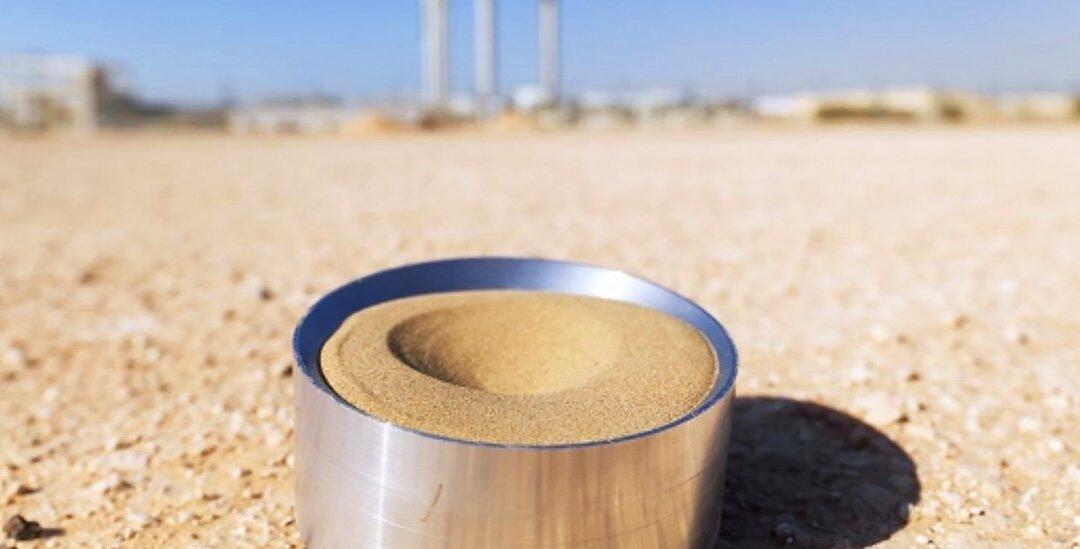When life gives you lemons, you make lemonade. When it hands you an abundance of dry, grainy sand, it’s a good idea to make the most of that as well. That’s exactly what a research group in Abu Dhabi is trying to do with a project that uses sand collected right there in the United Arab Emirates to store solar energy. Sandstock, the new technology created by scientists at Masdar Institute of Science and Technology, has proven after several rounds of testing that it may help reduce the cost of converting solar heat into usable electricity. It may also improve round-the-clock energy conversion, since sand can store energy to be converted at night.
Sand is much more than tiny grains that get stuck in your swimsuit, and the Sandstock project proves its application as a thermal energy storage (TES) material for concentrated solar power (CSP) facilities where storing solar heat is key to efficiency and production levels. Sand is capable of storing solar heat up to 1,832F (1,000C) and small scale tests have shown good results so far. “Two pilot models of the system have been tested in an effort to prove its efficiency and applicability on a large scale in big projects,” Nicolas Calvet, assistant professor of Mechanical & Materials Engineering at Masdar Institute, told SciDevNet. Calvet is also the head of the Institute’s Thermal Energy Storage Research Group.
The research is ongoing, but a study released last December summarized the team’s efforts and optimism. Currently, TES systems typically employ materials like synthetic oil and molten salts, which are expensive and not necessarily environmentally friendly. Replacing the TES material with sand—an abundant and inexpensive resource—could have a big impact on the solar power industry in utility scale plants.
Following the first two tests, researchers improved the prototype technology and are gearing up to perform additional tests at the pre-commercial scale level at Masdar Institute Solar Platform (MISP). The sand-based TES system is just one of several projects being developed at Masdar Institute to improve solar power capabilities in the UAE. Others include the CSP’s innovative beam-down tower which concentrates the light on a ground receiver, rather than at the top like most traditional CSP tower systems, as well as alternative TES materials. Sandstock will undergo further testing soon, and similar technologies are also being tested in the United States and Europe, as researchers race to improve efficiency and lower cost for solar power plants.











